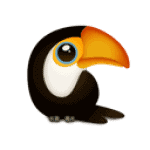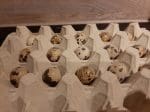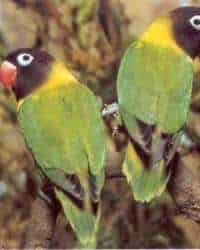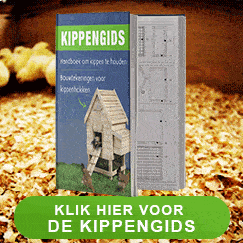The Agapornis Personata is a beautiful bird that every bird lover will enjoy. The wild form has a black head, yellow breast and green body.
Origin of the Agapornis Personata
Personatas are originally from the Irangi district of Northeast Tanzania. That is about 60 km southeast of the habitat of the Agapornis fischeri. It is special that the habitat of both species neither touch nor overlap. Their natural vegetation consists of dry savanna and grassland with occasional trees and shrubs. They mainly feed on grass seeds and berries. For this they have to search the ground for a large part of the day. You also see this occur in captivity, where the birds also regularly sit on the bottom.
Appearance of the Agapornis Personatus

There is no difference in appearance between man and female. And they are about 14 cm tall and have a dark black head. The neck is yellow, both in the front and in the back, as well as the chest. The back and tail are green. There is a characteristic white eye ring around the eyes. The beak is red and the legs gray with black nails.
Breed with the lovebird
Breeding with the personata works best in a colony context. But the personata is not the most difficult bird to breed, and often manages to be housed in pairs. Personatas are brotherly burrows in the wild, so they breed in a tree hollow somewhere. To simulate the tree cavity, one hangs nesting boxes (like the one below) in the aviary.
Personatas love to dress their nest box with willow branches or other branches. So don’t give them enough branches (preferably willow) so that they can gnaw and carry it in the nest. Make sure she puts the branches in the nest with a bowl in it. If she doesn’t, it could be 2 men or females. Usually 5-6 eggs are laid, which are incubated for about 22-23 days. They grow small with a ring of 4.2 to 4.5 mm. The age is then between 7-10 days. The young fledge six weeks after birth, after which they are fed by the parents for another two weeks.
It is best to let the birds kill only 2 clutches. And don’t get them started before 10-12 months of age!
Nutrition
As food it is best to give a mixture for lovebirds, supplemented with egg food, germ seed, fruit, green food and millet. Stomach gravel and grit should also be included. Examples of nutrition can be found below:






